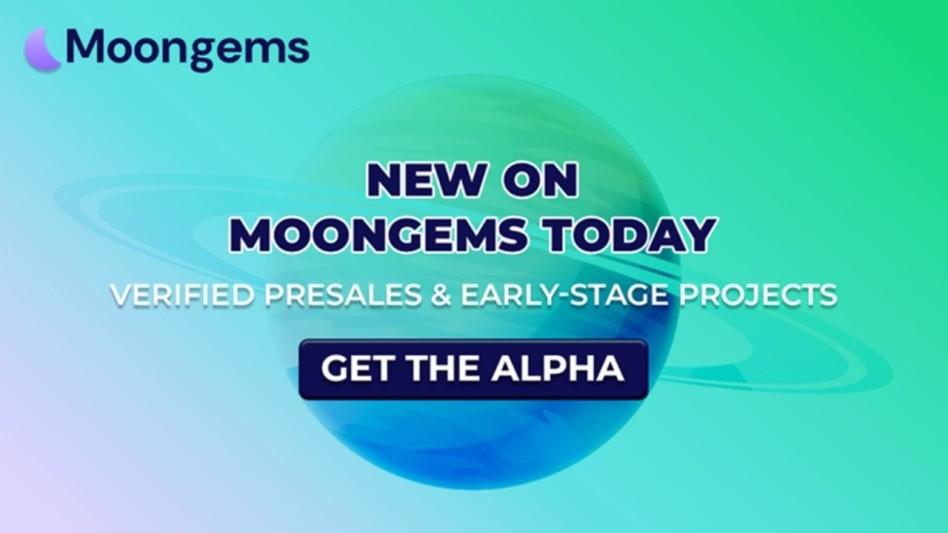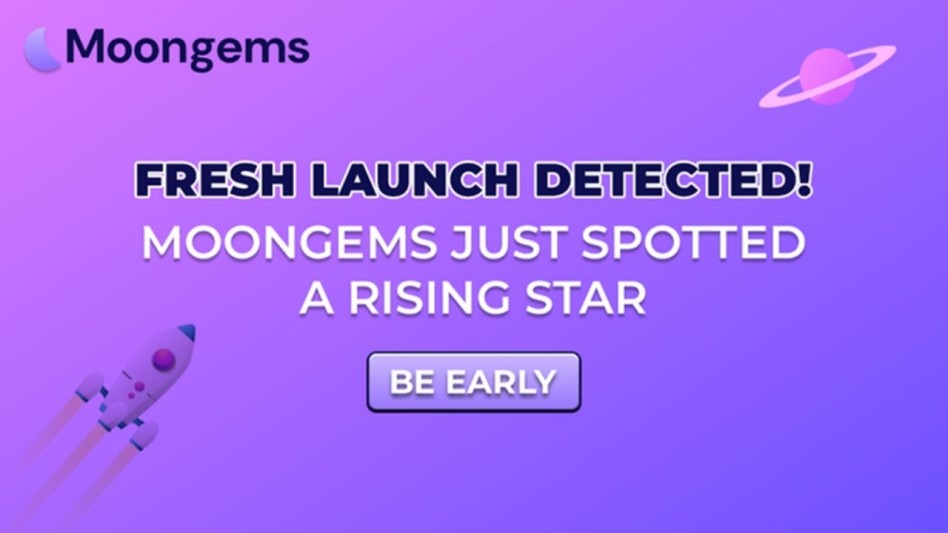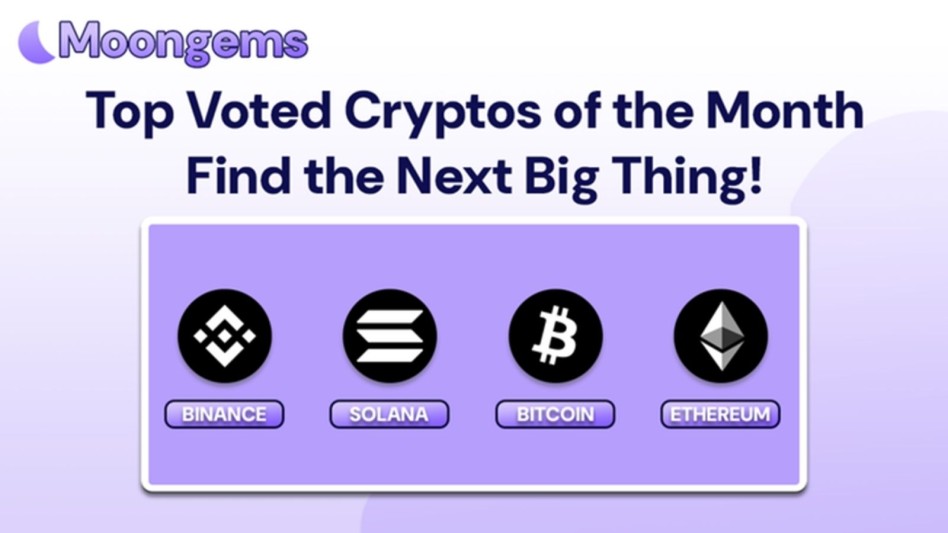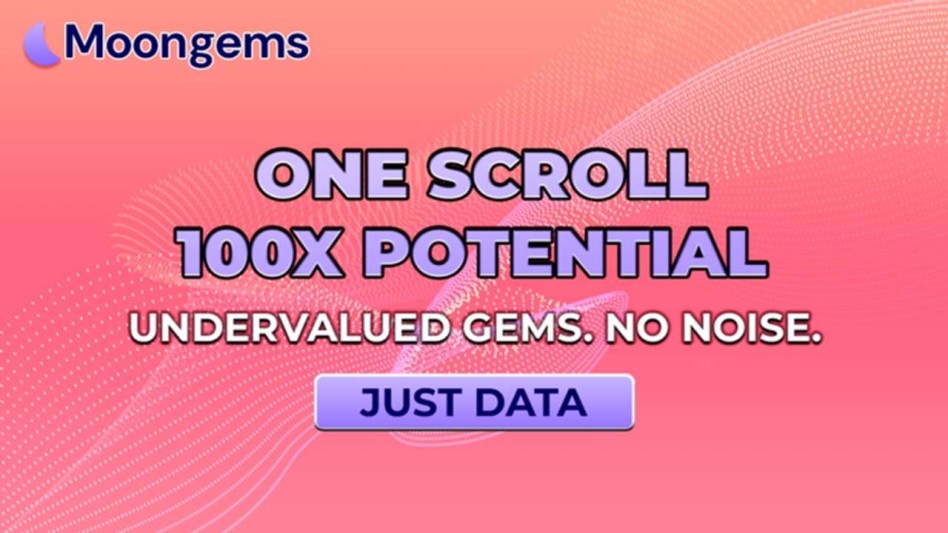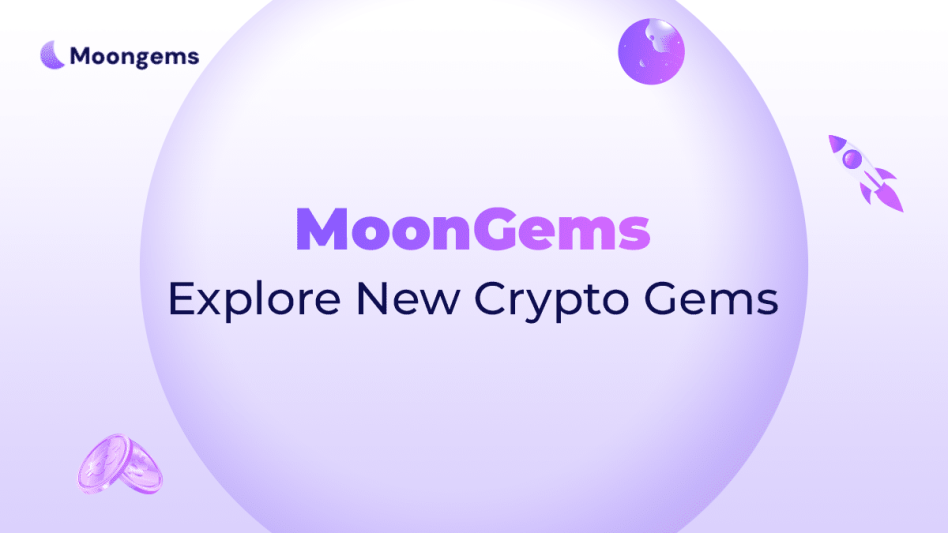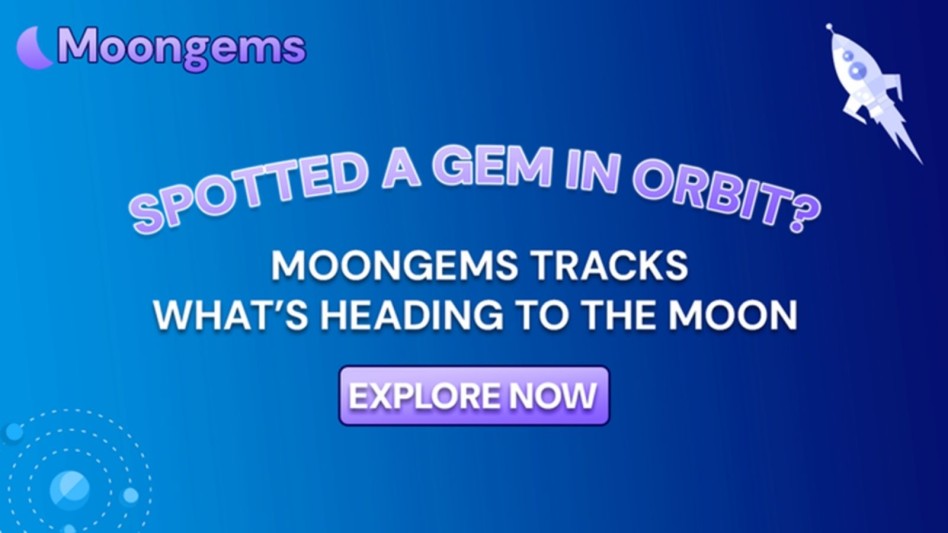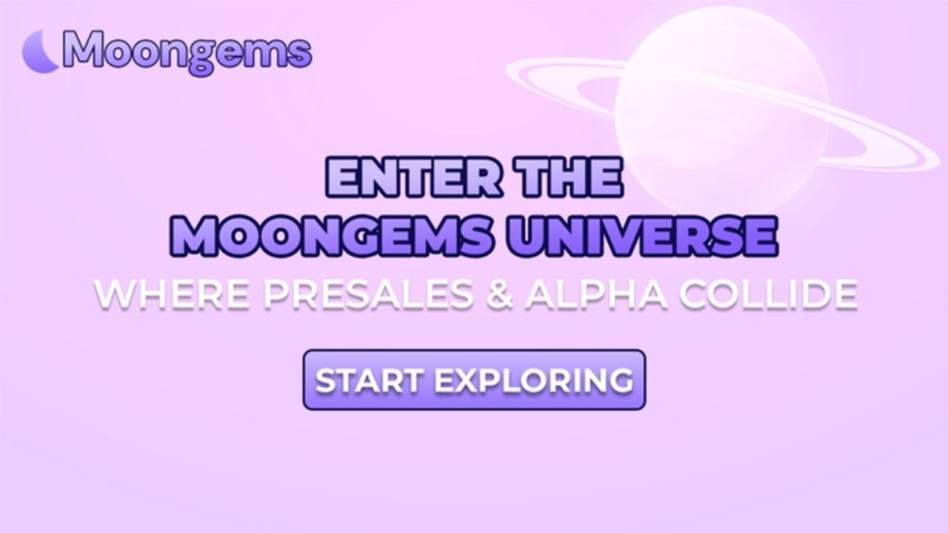Author: Jawad Hussain – Crypto Analyst & Web3 Researcher | 9+ years tracking presales, IDOs, and token launches. Follow him on X (formerly known as Twitter) and LinkedIn.
The era of blind presale investing is over. In 2025, whale tracking has evolved into a high-tech battlefield where artificial intelligence (AI) and on-chain analytics work hand in hand to uncover patterns that were once invisible to the average investor. The days when tracking a handful of wallet addresses could give you an edge are gone; whales have adapted, their strategies are more sophisticated, and the data trails they leave are buried under layers of transactions, multi-signature wallets, and cross-chain activity.
MoonGems sits at the intersection of this transformation, offering crypto enthusiasts, institutional investors, and even cautious newcomers the ability to monitor the most influential market movers in real time. By combining AI’s pattern recognition capabilities with the transparency of blockchain data, MoonGems transforms raw, chaotic transaction histories into clear, actionable insights.
In the competitive world of presales, whales have always had the upper hand. They buy early, influence community sentiment, and often dictate liquidity and price action during the first crucial weeks of a token’s life. But Whale Tracking 2.0 changes the game. Instead of simply reacting to whale moves after they happen, AI-powered tools now allow investors to anticipate them; spotting stealth accumulation, identifying coordinated buys, and even detecting early signs of potential dump scenarios before they unfold.
This evolution is not just about technology; it’s about leveling the playing field. The same algorithms that big funds and elite traders use are now accessible to everyday investors through platforms like MoonGems. Whether you’re a retail investor aiming to ride alongside whales or a project founder looking to understand your token’s holder dynamics, this new wave of on-chain intelligence makes it possible to make informed, data-driven decisions.
Over the course of this article, we’ll dive deep into how AI is transforming whale tracking, how MoonGems’ analytics toolkit works in practice, and why on-chain intelligence is becoming a critical skill for anyone serious about presale participation. We’ll explore real-world case studies, reveal the metrics that matter most, and outline strategies for both avoiding whale traps and profiting from their market moves.
Whale Tracking 2.0 isn’t the future; it’s already here. And for those ready to embrace it, the rewards can be as massive as the whales themselves.
The Evolution of Whale Tracking: From Manual to AI-Driven Intelligence
In the early days of cryptocurrency, whale tracking was almost an underground sport. Armed with nothing more than blockchain explorers like Etherscan and a good hunch, determined investors would manually sift through wallet addresses, tracing large transactions in the hope of catching a glimpse of “smart money” in action. It was slow, tedious, and reactive by the time most people spotted a whale’s move, the market had already shifted.
By 2020–2022, dedicated analytics platforms began to emerge, automating the basics. Alerts could be set for large transactions, token movements between wallets, and liquidity injections or withdrawals from decentralized exchanges. While these tools were a huge leap forward, they still had limitations. Data streams were raw, often overwhelming, and lacked the context needed to understand why a whale made a move.
Fast forward to 2025, and whale tracking has entered a new era. This is Whale Tracking 2.0, powered by artificial intelligence, machine learning, and deep on-chain intelligence. Platforms like MoonGems have transformed a once clumsy, manual process into a predictive science.
From Reactive to Predictive
The key difference between old-school whale tracking and today’s AI-driven systems is anticipation. Instead of reacting to a transaction after it’s confirmed, AI models analyze historical transaction patterns, wallet clustering data, and even off-chain sentiment to predict when a whale might accumulate or sell.
MoonGems’ AI engine, for example, doesn’t just look at the raw transaction size; it evaluates the timing, token pairing, cross-chain movements, and correlations with social media activity. If a whale wallet suddenly starts interacting with multiple new DeFi protocols, AI flags it as a potential preparation phase for accumulation.
Cross-Chain Intelligence
In the past, whale tracking was mostly Ethereum-centric. Today, whales operate across multiple chains: Ethereum, BNB Smart Chain, Solana, Polygon, and emerging L2 networks. MoonGems’ cross-chain intelligence ensures no whale activity slips through the cracks, mapping token movements across ecosystems and detecting synchronized actions across wallets.
This is crucial in presales. Whales often accumulate tokens in stealth mode by splitting purchases across several chains and wallets, making them harder to detect without a unified tracking system. MoonGems connects these dots automatically.
Behavioral Fingerprinting
Another leap forward in Whale Tracking 2.0 is the concept of behavioral fingerprinting. Just as traders have habits, so do whales: preferred liquidity pools, typical buy/sell sizes, and time-of-day patterns. MoonGems builds behavioral profiles for known whale wallets, allowing the system to detect subtle deviations that might indicate a shift in strategy.
For example, if a whale known for gradual accumulation suddenly executes multiple rapid buys, AI interprets this as a high-confidence entry, a potential bullish signal for the token.
From Hunches to Hard Data
What makes this transformation so powerful is the elimination of guesswork. AI-powered whale tracking takes millions of data points, from transaction hashes to Telegram chat velocity, and distills them into a single, actionable insight. This enables investors not just to watch whales, but to align their own positions with them strategically.
The days of chasing rumors and reacting to Twitter threads are over. With platforms like MoonGems, even a retail investor can have the same quality of intelligence that was once reserved for hedge funds and elite trading desks.
Whale Tracking 2.0 is not about replacing human intuition; it’s about enhancing it. AI processes the noise, filters the signal, and leaves the final decision to you. And in the high-stakes world of presales, that edge can mean the difference between riding a whale wave or becoming its prey.
How AI Enhances Whale Tracking in Presales (MoonGems’ Tech Stack)
Artificial intelligence is no longer a luxury in crypto analytics, it’s the core driver of Whale Tracking 2.0. In presales, where token prices can swing dramatically within hours of launch, AI’s ability to filter noise and surface actionable insights has redefined how serious investors operate. MoonGems has built its analytics engine with this in mind, combining multiple AI-powered modules to deliver the clearest possible view of whale activity.
1. Pattern Recognition and Wallet Clustering
At the heart of MoonGems’ AI capabilities is wallet clustering, the process of grouping addresses controlled by the same entity. Whales often split their holdings across dozens of wallets to conceal their true position size. MoonGems uses machine learning to spot transaction patterns, gas usage habits, and token interaction histories that suggest ownership links between wallets.
For example, two wallets funding each other through identical bridges, participating in the same presales, and withdrawing liquidity in sync are likely part of a single whale strategy. By clustering them, MoonGems reveals the true scale of accumulation or selling pressure.
2. Predictive Accumulation Models
MoonGems’ AI doesn’t stop at identifying whale wallets; it actively predicts accumulation phases. Using historical on-chain data and market context, it looks for signs that a whale is gearing up for a major buy. This might include:
- Increased stablecoin inflows into a whale’s known wallets
- Token swaps into presale-eligible assets
- Test transactions to new liquidity pools before bulk buying
By detecting these early signals, MoonGems allows users to position themselves before the whale makes their big move.
3. Sentiment-Driven Trade Analysis
Whales don’t operate in a vacuum; their actions are often influenced by market sentiment. MoonGems integrates social listening tools that scrape data from Twitter, Telegram, Discord, and Reddit, feeding it into natural language processing (NLP) models.
The AI then cross-references on-chain actions with sentiment shifts. For instance, if a presale token sees a sudden spike in bullish mentions and a whale starts moving stablecoins into related wallets, the system flags this as a potentially coordinated move.
4. Cross-Chain Whale Tracking
With presales launching on multiple blockchains, whales now spread activity across ecosystems. MoonGems’ cross-chain scanner tracks movements between Ethereum, BNB Smart Chain, Solana, Polygon, and Layer 2 networks.
This feature is crucial because whales may accumulate a presale token on one chain, while manipulating liquidity or staking rewards on another. Without cross-chain intelligence, these moves would appear unconnected; MoonGems links them into a single narrative.
5. Early Dump Detection
Nothing rattles a presale market faster than a whale dumping tokens right after launch. MoonGems’ dump detection module analyzes sell patterns and liquidity withdrawals in real time. If a whale starts unloading at a suspicious pace, users receive instant alerts, giving them the chance to exit or hedge.
6. Customizable Whale Alerts
Instead of monitoring hundreds of metrics manually, MoonGems lets users set custom whale alerts based on wallet behavior, transaction size, or even interactions with specific DeFi protocols.
An investor can, for example, get notified if a known presale whale suddenly adds liquidity above a set threshold, signaling confidence in a token.
MoonGems’ tech stack takes whale tracking far beyond basic transaction watching. By merging AI-driven wallet clustering, predictive modeling, sentiment analysis, cross-chain tracking, and dump detection into a unified dashboard, it empowers both retail and institutional players to make timely, data-backed decisions.
In presales, where speed and foresight are everything, these capabilities can mean the difference between buying in alongside a whale’s entry or being caught in the wake of their exit.
Strategies for Retail Investors to Leverage Whale Data Without Becoming Exit Liquidity
Whale tracking isn’t just about curiosity; it’s about survival in a market where large players can single-handedly set the tone. The key for retail investors is learning how to use whale data proactively without falling into the trap of simply chasing their moves. MoonGems’ analytics suite makes this possible by turning whale activity into actionable, risk-aware strategies.
1. Follow Patterns, Not Just Transactions
Retail investors often make the mistake of reacting to a single large whale buy. This can lead to buying at the very top of a pump. Instead, MoonGems encourages pattern-based observation.
For example:
- Accumulation consistency: A whale buying steadily over multiple days is more bullish than a one-off purchase.
- Cross-project exposure: If a whale invests in multiple tokens within the same narrative (e.g., AI or gaming), it could signal an emerging sector trend.
MoonGems’ wallet clustering tools identify these longer-term behaviors, so investors can align with sustainable trends rather than hype spikes.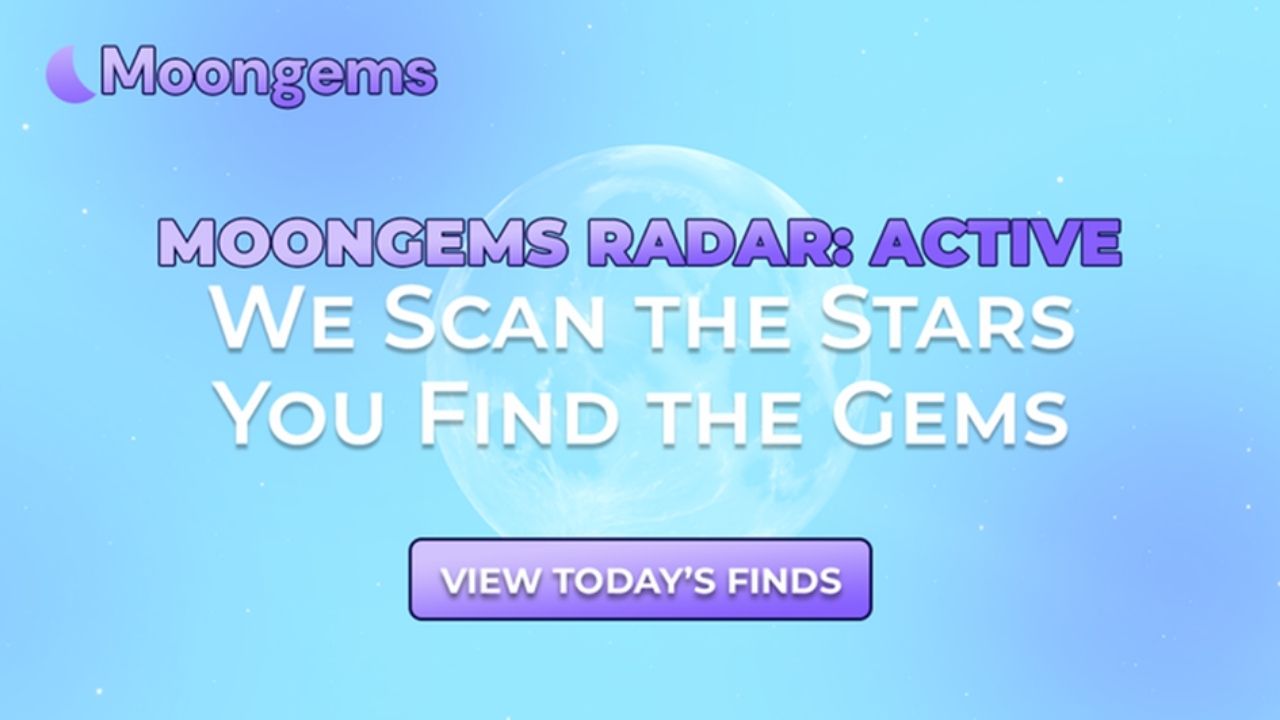
2. Use Whale Buys as Confirmation, Not Triggers
Smart traders don’t blindly enter because a whale entered, they use it as confirmation of their own research.
For instance, if your fundamental analysis says a presale has strong tokenomics, and MoonGems flags early whale accumulation, that’s a green light to consider entry. This dual-validation approach filters out false signals and reduces the risk of being caught in manipulative setups.
3. Track Whale Exits as Closely as Their Entries
Entries make headlines, but exits kill portfolios. Whale exits, especially sudden liquidity withdrawals, can precede sharp drops in token price.
MoonGems’ dump detection and liquidity tracker can be configured to send real-time alerts if a whale offloads more than a set percentage of holdings. Retail investors should treat these alerts as urgent; either securing profits, setting stop-losses, or hedging exposure.
4. Understand the Whale’s Motive
Not all whale moves are purely profit-driven. Some accumulate to support a project they’re advising; others might be positioning for governance control.
MoonGems’ sentiment integration and social media tracking help uncover whether a whale’s activity aligns with long-term conviction or short-term speculation. Investors who ignore this context risk misreading the situation entirely.
5. Diversify Based on Whale Data
Whale tracking should inform portfolio construction, not dictate it. If multiple whales are entering across several uncorrelated presales, it may be worth spreading capital rather than going all-in on one project.
MoonGems’ sector heatmaps show where whale money is concentrating, enabling retail investors to diversify into narratives whales are quietly backing.
6. Stay Ahead with Alerts and Historical Analysis
MoonGems doesn’t just track whales in real time; it archives historical behavior. Investors can study past whale strategies to anticipate future moves, especially around presale-to-launch transitions.
For example, if a certain whale historically holds for 90 days before taking profit, their latest buy might give you a rough timeline for your own position management.
The Bottom Line
The goal is not to “beat” whales; that’s unrealistic. The goal is to coexist profitably in the same waters by reading their currents instead of fighting them. MoonGems gives retail investors a periscope into whale-dominated markets, enabling them to:
- Identify accumulation before public hype
- Exit before catastrophic dumps
- Allocate capital in line with emerging narratives
By turning whale activity from a threat into a guide, retail traders can flip the script, becoming strategic beneficiaries of whale moves instead of collateral damage.
How MoonGems Analyzes Investor Sentiment
In presale markets, money moves on mood as much as on math. While on-chain whale tracking reveals what large investors are doing, understanding why they act often requires a deep dive into sentiment. MoonGems bridges this gap by blending natural language processing (NLP), social listening, and cross-chain data aggregation to produce highly accurate sentiment scores for projects before, during, and after presales.
1. Multi-Channel Social Listening
Crypto sentiment is shaped in real time across multiple platforms: Twitter (X), Telegram, Discord, Reddit, YouTube, and even niche developer forums. MoonGems runs 24/7 scrapes and API integrations to capture conversation volume, engagement quality, and emotional tone across these channels.
- Volume spikes: A sudden surge in mentions may indicate growing hype or incoming news.
- Engagement quality: High comment-to-like ratios often signal genuine interest rather than bot amplification.
- Community split detection: MoonGems can identify when discussions turn polarized, often a precursor to volatility.
By layering these metrics, MoonGems avoids the trap of relying solely on raw mention counts, which are easy to manipulate.
2. AI-Powered NLP & Contextual Understanding
Not all positive words are bullish, and not all criticism is bearish. MoonGems’ NLP engine evaluates sentiment in context, filtering out sarcasm, memes, and bait posts.
For example:
- A post saying “This token is going to the moon: sarcasm” will be correctly flagged as negative.
- Technical discussions about security audits, even if critical, might be marked as neutral if they reflect healthy due diligence.
This contextual intelligence helps avoid sentiment misreads that could lead to bad trades.
3. Cross-Chain Sentiment Correlation
Presales often exist in ecosystems: Solana meme coins, Ethereum DeFi tokens, and BNB gaming projects. MoonGems correlates sentiment between projects in the same category, allowing investors to spot sector-wide mood swings.
For instance, if sentiment towards AI tokens on Solana turns sharply positive after a major partnership announcement, similar presales in that niche could ride the wave. Conversely, a rug pull in a related project might dampen enthusiasm across the sector.
4. Sentiment-to-Whale Behavior Mapping
One of MoonGems’ most powerful features is connecting sentiment shifts directly to whale actions.
Example:
- Phase 1: Sentiment in Telegram groups rises steadily over two weeks.
- Phase 2: Whales begin making medium-sized entries.
- Phase 3: Sentiment spikes due to influencer coverage, triggering larger whale buys.
By mapping this sequence historically, MoonGems can forecast likely next moves when similar patterns emerge.
5. Early Warning Alerts
Sometimes the smartest play is to not enter. MoonGems’ sentiment model generates “heat index” alerts when hype levels surpass sustainable levels, often a sign that a presale is peaking and post-launch selling pressure will be high.
In 2025, this feature saved investors from a highly marketed NFT token presale that was backed by aggressive influencer campaigns but had weak fundamentals. Despite bullish social buzz, MoonGems flagged a Sentiment Risk Level 9/10, and within a week of launch, the token fell 72%.
The Strategic Edge for Retail Investors
MoonGems turns scattered noise into structured intelligence. For retail investors, this means:
- Identifying projects with genuine grassroots excitement.
- Avoiding traps set by paid shilling and artificial hype.
- Understanding how mood shifts affect whale behavior and vice versa.
In volatile presale markets, sentiment isn’t just a side metric; it’s a leading indicator. MoonGems’ investor sentiment engine makes sure traders see it clearly before it moves the market.
Conclusion: The New Era of Whale Tracking
Whale Tracking 2.0 has redefined how presale markets operate in 2025. The days when whale behavior was a mysterious force, visible only to insiders, are over. AI-driven analytics and on-chain intelligence now give retail and institutional investors alike access to actionable insights that were once locked behind private trading desks.
MoonGems stands at the forefront of this transformation. By merging on-chain whale wallet monitoring, sentiment mapping, and sector-wide narrative tracking, it empowers investors to see the market not as a chaotic battlefield, but as a strategically predictable ecosystem.
In this landscape, opportunity and risk are two sides of the same coin. Whales can elevate a presale to unimaginable heights or crash it in a single liquidity event. The difference lies in timing, context, and intelligence: the very pillars of MoonGems’ platform.
The value of this intelligence goes beyond simply copying whale trades. Instead, it enables a proactive market posture:
- Entering before whale-led surges take off.
- Avoiding overhyped traps set for late entrants.
- Managing exit strategies to lock in profits without becoming exit liquidity.
As presale markets mature, data will continue to be the decisive edge. Those who rely solely on hype will be left behind; those who blend narrative awareness, whale tracking, and sentiment intelligence will thrive.
The future of presale investing is transparent, data-rich, and accessible, and platforms like MoonGems are the gateway. In a market driven by speed, precision, and psychological nuance, it’s not enough to simply follow the whales. The winning strategy is to understand them.
Frequently Asked Questions (FAQs)
- What is Whale Tracking 2.0?
It’s the use of AI and advanced on-chain analytics to monitor and interpret whale activity in real time, offering deeper insights than traditional tracking. - How does MoonGems help retail investors?
MoonGems gives retail traders institutional-grade whale and sentiment data, helping them time entries, exits, and risk exposure. - Can whale tracking guarantee profits?
No, but it significantly improves decision-making by reducing guesswork and highlighting patterns that often precede major market moves. - What’s the biggest risk of whale-dominated markets?
Sudden coordinated exits, which can cause rapid price drops if not anticipated. - Does MoonGems track cross-chain whales?
Yes, its multi-chain intelligence maps whale activity across Ethereum, Solana, BNB, and other ecosystems.
Glossary
Presale Whale – Large investor acquiring significant allocation before public listing.
On-Chain Intelligence – Blockchain data analysis to identify market patterns.
Liquidity Event – Sudden injection or removal of capital affecting token prices.
Wallet Clustering – Grouping multiple wallets belonging to the same entity.
Sentiment Mapping – Tracking community mood and narrative shifts in real time.
Article Summary
Whale Tracking 2.0 merges AI-driven analytics with on-chain intelligence to make whale behavior in presales transparent and actionable. MoonGems equips investors with wallet clustering, sentiment mapping, and narrative tracking, enabling both opportunity capture and risk avoidance. In whale-dominated markets, understanding patterns is more valuable than simply following them.
Disclaimer
This article is for educational purposes only and does not constitute financial advice. Cryptocurrency markets are highly volatile, and past whale behavior does not guarantee future results. Always conduct independent research before investing, and consider consulting a licensed financial advisor.



